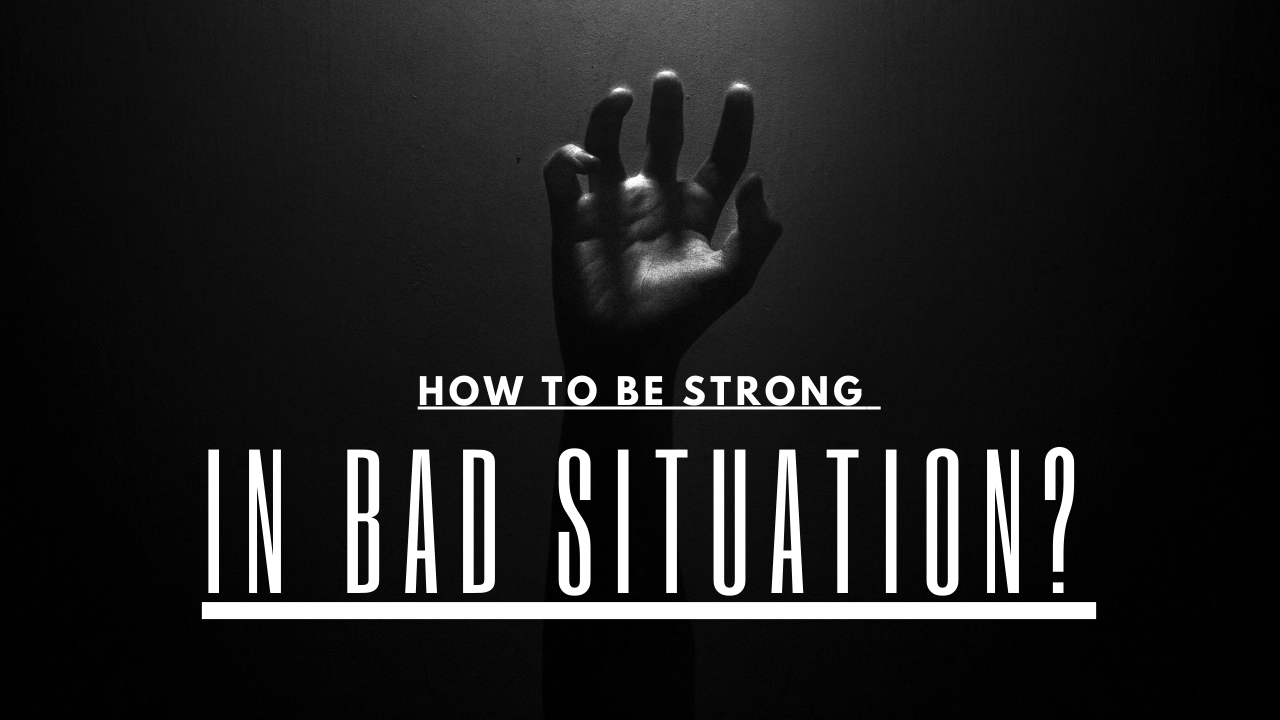
How to be strong in bad situation ?
Life is an unpredictable journey filled with both sunny days and stormy nights. While we often cherish the moments of joy and success, it’s equally important to equip ourselves with the strength to weather the challenges that come our way. In this guide, we’ll explore the art of resilience and delve into strategies on how to be strong in bad situations.
Understanding Resilience:
Resilience is not the absence of hardships but the ability to bounce back from them. How to be strong in bad situations is a question that has intrigued philosophers, psychologists, and individuals alike for centuries. The journey toward strength begins with understanding that adversity is a natural part of life, and our response to it can shape our character.
Embracing a Positive Mindset:
One of the fundamental pillars of strength in challenging times is cultivating a positive mindset. The way we perceive and interpret a situation greatly influences our emotional response. Instead of viewing difficulties as insurmountable obstacles, see them as opportunities for growth. How to be strong in bad situations starts with reframing your perspective.
Acceptance and Adaptability:
Life often unfolds in ways we can’t predict or control. Learning to accept the things we cannot change and adapting to new circumstances is a crucial aspect of building resilience. How to be strong in bad situations involves acknowledging that not every challenge can be avoided, but our response to it is within our control.
Building a Support System:
Strength doesn’t always come from within; it also flourishes in the connections we build with others. Establishing a strong support system of friends, family, and mentors is vital in navigating tough times. Discussing your concerns and seeking guidance can provide valuable insights on how to be strong in bad situations.
Self-Care and Well-Being:
Taking care of your physical and mental well-being is a cornerstone of resilience. Amidst life’s storms, prioritize self-care activities that rejuvenate your mind and body. Whether it’s exercise, meditation, or simply spending time in nature, these practices contribute to your overall strength. How to be strong in bad situations involves recognizing the importance of a healthy lifestyle.
Drawing Strength from Past Experiences:
Reflecting on past challenges and triumphs can be a wellspring of strength. Consider moments in your life when you faced adversity and emerged stronger. These experiences serve as a reminder of your resilience and capabilities. How to be strong in bad situations is often rooted in the lessons learned from overcoming past difficulties.
Maintaining a Long-Term Perspective:
In the midst of a crisis, it’s easy to lose sight of the bigger picture. However, maintaining a long-term perspective is essential for enduring strength. Recognize that difficult times are temporary, and every challenge is an opportunity for growth. How to be strong in bad situations involves focusing on the long-term goals that transcend momentary setbacks.
Cultivating Emotional Intelligence:
Understanding and managing your emotions is a key aspect of resilience. Acknowledge your feelings without judgment and develop strategies to cope with them constructively. Cultivating emotional intelligence empowers you to respond to adversity in a way that aligns with your values. How to be strong in bad situations is intrinsically linked to your ability to navigate and understand your emotions.
Seeking Professional Help:
There’s strength in recognizing when you need assistance. If the burden becomes overwhelming, seeking the guidance of a mental health professional can be a wise decision. They can provide valuable insights, coping strategies, and a supportive environment to help you navigate challenging times. Knowing when and how to seek professional help is an integral part of learning how to be strong in bad situations.
Conclusion:
In conclusion, the journey of how to be strong in bad situations is a profound exploration of self-discovery and resilience. It involves cultivating a positive mindset, accepting and adapting to change, building a strong support system, prioritizing self-care, drawing strength from past experiences, maintaining a long-term perspective, cultivating emotional intelligence, and recognizing when professional help is needed.
If you wish to read more depth, here intheknow.insead.edu wrote nicely as extra energy for you.
Life’s challenges may be unavoidable, but our response to them defines our strength and character. By embracing these strategies, you not only weather the storms but emerge from them with newfound resilience and wisdom. How to be strong in bad situations is not just a question; it’s a lifelong pursuit of inner strength and fortitude.
you can also read peace of mind and problems handling guide here.
